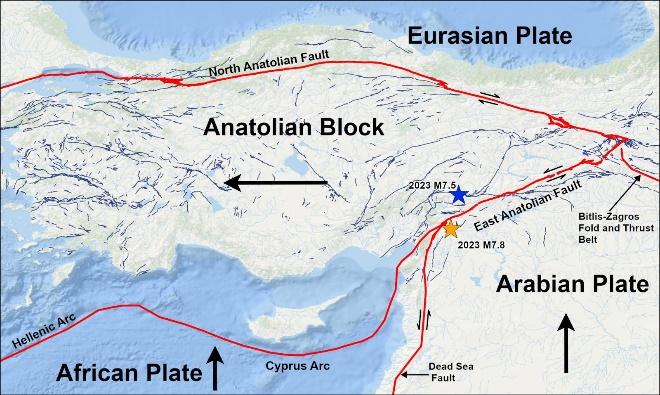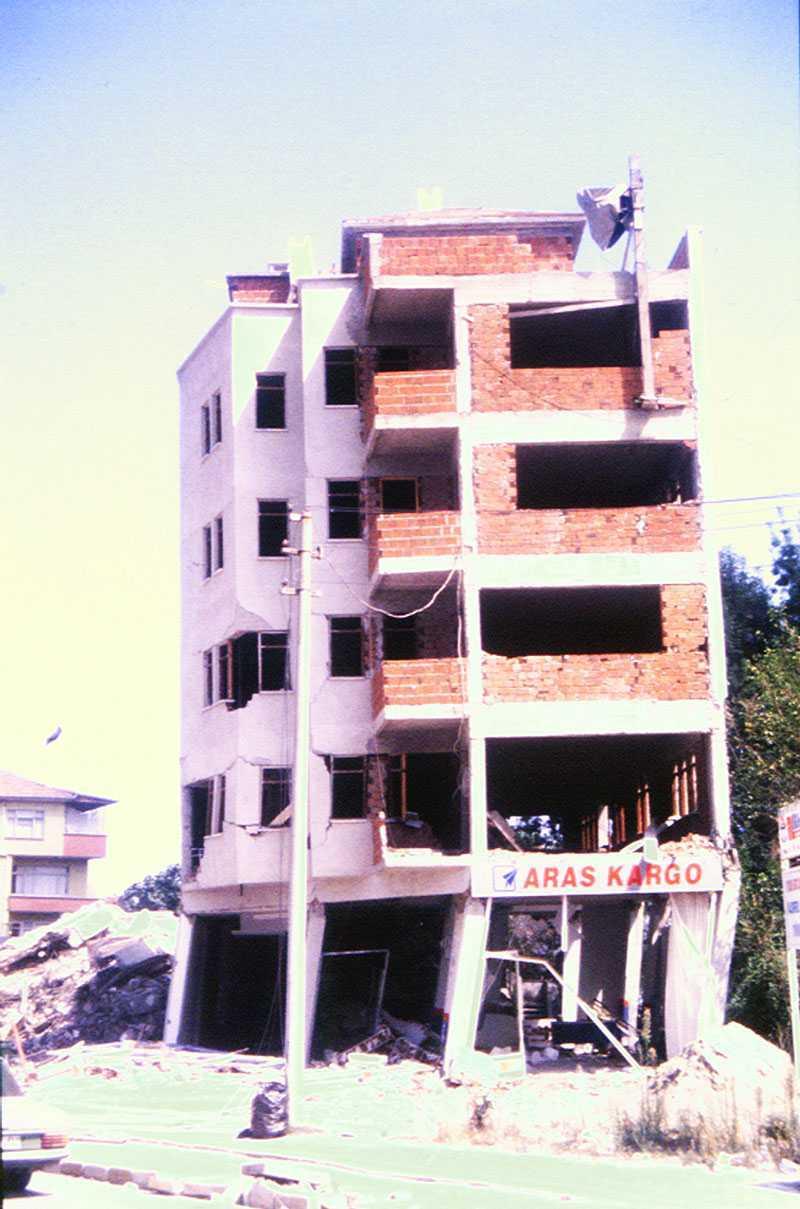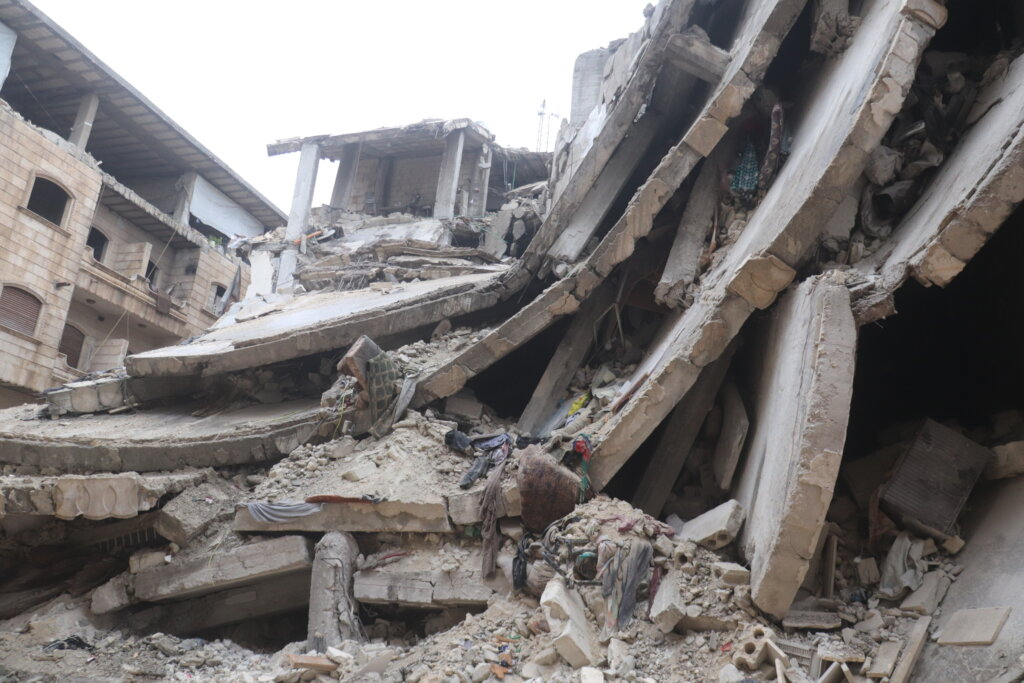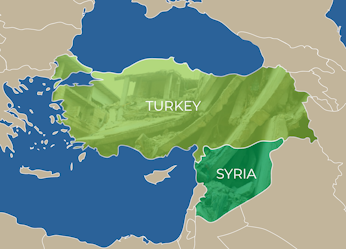

M|O Perspectives
Check back here for our thoughts on the latest developments in our industry.
Learning from the February 2023 Turkey-Syria Earthquakes
Apr 17, 2023
On February 6, 2023, a magnitude 7.8 earthquake occurred in southern Turkey near its border with Syria, followed about nine hours later by a magnitude 7.5 earthquake approximately 60 miles to the north of the first one. The impacts of these earthquakes were devastating. The number of fatalities in both countries has risen to approximately 58,000. According to Turkish government sources, more than 200,000 buildings collapsed or suffered damage severe enough to require demolition. Over a million people have been displaced as a result.
To learn more about the earthquakes in this region, and the damage they caused, Marx|Okubo turned to two members of its structural engineering group for a Q&A to gain more specific insights. John Kundak and Adil Ozdogan were both born in Turkey, and completed degrees in architecture and civil engineering there, before coming to the United States for graduate school. Adil is currently working as an associate in Marx Okubo’s Northeast region, and John is a senior associate in the Southeast region. Marx|Okubo discussed the topic with John and Adil recently:
Marx|Okubo: It was a relief to hear that none of your family members or close friends were directly impacted by the recent earthquakes in Turkey. Yet, that doesn’t take away from the magnitude of the devastation and suffering that people are currently dealing with in the affected regions. Adil, can you provide us some background on the local seismicity and the history of earthquakes in the region asdf?
Adil: Turkey is a seismically active area within the complex zone of collision between the Eurasian Plate, African Plate, and Arabian Plate, as shown in Figure 1 below. Much of the country lies on the Anatolian Plate, a small plate bounded by two major fault zones that run through Turkey, the North Anatolian Fault, and the East Anatolian Fault. The North Anatolian Fault is considered the more active of the two, and most recently generated a devastating earthquake in 1999. The February 2023 earthquakes, in contrast, occurred on the East Anatolian Fault. It affected 10 provinces which house approximately 15 million people.

Marx|Okubo: John, what can you tell us about building construction in the region that was impacted by these earthquakes?
John: The cities that are impacted are all historic and were settled thousands of years ago very close to the fault lines, as humans followed the sources of water, which tend to accumulate in the valleys created by seismic activity.
The buildings in Turkish cities are typically four to ten stories tall. The primary structural system is a reinforced concrete frame, which is infilled with masonry at the upper stories, as shown in Figure 2 below. In Turkey, the ground floors are nearly always occupied by businesses, and have a lot of glazing. The upper story infill walls will be always brick construction, which creates a major weight and stiffness discrepancy between the first floor and the upper floors. This type of construction also lacks shear walls, and the horizontal beams are much stiffer than the skinny columns supporting them.
This translates into the pancake-type collapse under lateral earthquake loads that is seen in all footage from the 2023 earthquakes, as shown in Figure 3 below. The ground floor columns fail suddenly and the entire building collapses. In some cases, the upper floors may stay intact, but the lowest level is still flattened or damaged beyond repair.

Marx|Okubo: For many days and weeks following the earthquakes, we have seen new videos of buildings that turned into ruins in a matter of a few seconds. In addition to the vulnerabilities of the structural system, what do you think are other reasons that contributed to such a vast destruction and devastation?
John: The two main events were devastatingly strong, and the fact that they occurred within less than 24 hours of each other increased the extent and severity of damage, and the resulting number of casualties. The first earthquake measured a magnitude of 7.8, and had a Mercalli Intensity of 11, lasting 81 seconds.
Adil: The total energy released by the two earthquakes is 32 petajoules, which is equivalent to more than 30 atomic bombs. Scientists claim that the entire country shifted roughly 12 feet to the west as a result of the earthquakes. Earthquake magnitudes can be somewhat deceptive, as a magnitude 6 may not seem that much bigger than a magnitude 5, but each whole number increase in magnitude represents a 32 time increase in energy released.
John: Another contributing factor was that both events were shallow crust, with epicenters located at approximately 11 miles and 3.5 miles depth. This means the energy released has less distance to travel before it reaches the earth’s surface, making them potentially more damaging than those with deeper epicenters. The ground shaking that these earthquakes caused, which we measure in terms of ground acceleration, may have exceeded design accelerations used in current building codes in many locations. Shallow epicenters also tend to have more surface expression of the fault rupture, and there have been many examples of large surface displacements, including sections with gaps opening all the way up to 600 feet.
Adil: There were also many other contributing factors that made these events so impactful. The mountainous geography and harsh winter conditions complicated rescue operations.
John: Aftershocks also continued for many days, with over 2100 measured, including four exceeding a magnitude of 6. Aftershocks can be very dangerous when buildings are already severely weakened by the main event. There are many examples of people trying to retrieve their belongings from damaged buildings, which were then hit by the second earthquake or aftershocks, further damaging or collapsing buildings.

Marx|Okubo: Do you have any takeaways from these events?
John: What makes this type of devastation particularly difficult to watch for us as structural engineers, is that the type of failure of buildings that was observed during this earthquake was well understood after the 1999 earthquakes. Many of the vulnerabilities were addressed in building code changes, and incentives to address weaker buildings, along with more stringent inspection requirements. Early video footage indicates that some critical infrastructure buildings with mat foundations on rubber dampener systems appear to survive the event unscathed, so this may become the ultimate solution in the future for all buildings construction in the high earthquake risk zones in Turkey.
Adil: The press has highlighted potential design errors and construction defects. It serves as a good reminder that construction is a team effort involving owners, designers, contractors, inspectors, and building departments. Each member has a role and each one of them should be held accountable for their responsibilities. The recent earthquake in Turkey has numerous lessons for the country and the world. We should always be preparing and designing for the worst-case scenario and have multiple recovery plans to build resilient communities. The best planning starts with putting the safety of people first.
If you have any questions about the earthquakes in Turkey and Syria, or questions about the seismic safety of your buildings, please don’t hesitate to connect with Adil adil_ozdogan@marxokubo.com or John john_kundak@marxokubo.com.

What we do.
- Owner's Representation
- Property Condition Assessment
- Project Management
- Constructability Reviews
- Repair | Reconstruction
- Facility Condition Assessment
- Construction Loan Monitoring
- Accessibility
- Building Enclosure
- Fire | Life Safety
- Mechanical | Electrical | Plumbing
- ESG | Sustainability & Resiliency
- Structural Engineering
- ASAP® - Automated Structure Alert Program
Marx|Okubo is a national architecture/engineering/construction consulting firm that works with real estate owners, investors and lenders—at every point of the property lifecycle—to evaluate their building projects, solve complex challenges and implement tailored solutions. We help clients understand their projects’ complexities, so they can make more informed decisions and, ultimately, mitigate their risk.




